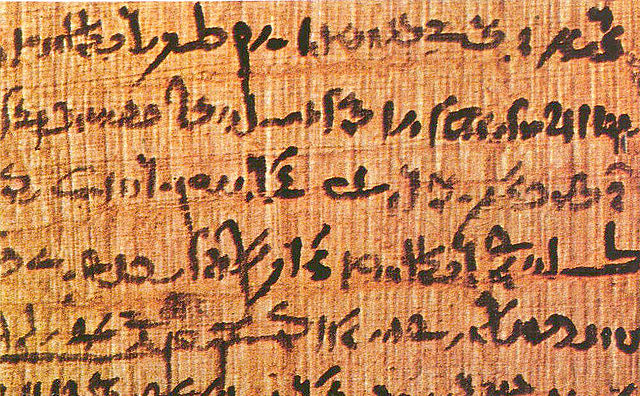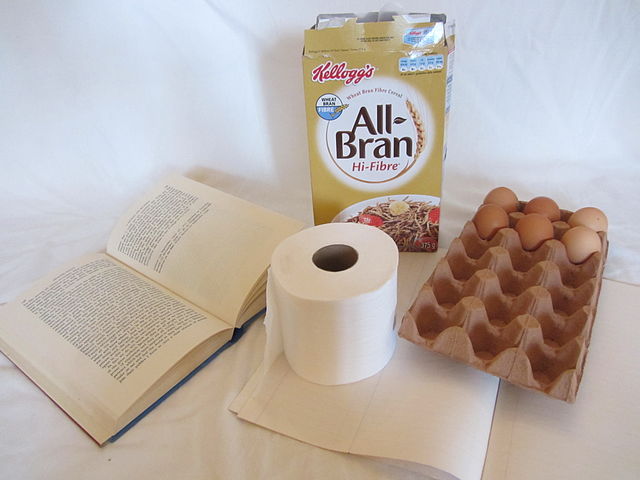Papyrus is a material similar to thick paper that was used in ancient times as a writing surface. It was made from the pith of the papyrus plant, Cyperus papyrus, a wetland sedge. Papyrus can also refer to a document written on sheets of such material, joined side by side and rolled up into a scroll, an early form of a book.
Papyrus (P. BM EA 10591 recto column IX, beginning of lines 13–17)
An official letter on a papyrus of the 3rd century BCE
A section of the Egyptian Book of the Dead written on papyrus
Roman portraiture fresco of a young man with a papyrus scroll, from Herculaneum, 1st century AD
Paper is a thin sheet material produced by mechanically or chemically processing cellulose fibres derived from wood, rags, grasses, or other vegetable sources in water, draining the water through a fine mesh leaving the fibre evenly distributed on the surface, followed by pressing and drying. Although paper was originally made in single sheets by hand, almost all is now made on large machines—some making reels 10 metres wide, running at 2,000 metres per minute and up to 600,000 tonnes a year. It is a versatile material with many uses, including printing, painting, graphics, signage, design, packaging, decorating, writing, and cleaning. It may also be used as filter paper, wallpaper, book endpaper, conservation paper, laminated worktops, toilet tissue, currency, and security paper, or in a number of industrial and construction processes.
Paper products: book, toilet paper, ruled paper, carton, egg box
Hemp wrapping paper, China, c. 100 BCE
The microscopic structure of paper: Micrograph of paper autofluorescing under ultraviolet illumination. The individual fibres in this sample are around 10 µm in diameter.
Paper mill in Mänttä-Vilppula, Finland








